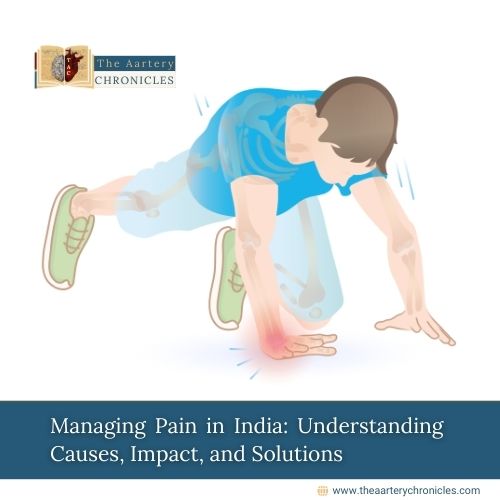

Cervical Cancer: A Critical Health Issue in India- Expert Insights from Dr. Aditya Ranot
Overview
Cervical cancer remains one of the most significant health challenges faced by women worldwide, particularly in low- and middle-income countries. Despite being largely preventable, it continues to be the second most common cancer among women in many regions. The primary cause of cervical cancer is the human papillomavirus (HPV), a virus that is often spread through sexual contact. While a highly effective vaccine exists to protect against HPV, barriers such as limited access, lack of awareness, and societal stigma contribute to the persistent prevalence of this disease.
In a recent discussion, Dr. Aditya Ranot, a distinguished surgical oncologist, at VMMC and Safdarjung Hospital emphasized the critical need to address cervical cancer as a major health concern. During the conversation with The Aartery Chronicles, he elaborated on why cervical cancer demands urgent attention, highlighting the various factors that contribute to its high prevalence in India.
The Prevalence and Late Diagnosis of Cervical Cancer in India
Dr. Ranot noted that cervical cancer is the second most common cancer among women in the country. Unfortunately, many patients only seek medical help when the disease has reached its later stages, often progressing to stage 3 or stage 4. At this point, treatment options become limited, and the costs associated with advanced treatments can be prohibitive for many patients.
Some of the key reasons that perpetuate increased incidence and late diagnosis of cervical cancer in India include
1. Societal Stigma and Lack of Awareness
Dr. Ranot explained that one of the key reasons for late diagnoses is the societal stigma associated with cervical cancer.
- Many women hesitate to seek medical help due to feelings of shame and a lack of awareness about the disease.
- Furthermore, educational levels significantly impact this issue, as many women are not aware that cervical cancer is preventable.
2. Limited Access to HPV Vaccine
The primary cause of cervical cancer is the human papillomavirus (HPV), and a vaccine is available to protect against it. However, access to this vaccine is limited, particularly in rural areas, and it is not provided free of charge. Dr. Ranot emphasized that improving access to the HPV vaccine, ideally by making it free, would significantly benefit women across the country. He also highlighted the importance of educating the public, especially in rural regions, about the availability and significance of the HPV vaccine.
3. Increasing Prevalence of HPV Amidst India’s Development
Dr. Ranot also expressed concern about the shifting dynamics in India as the country transitions from a developing nation to a developed one. He pointed out that early sexual activity, which has become more common, is contributing to the spread of HPV and, consequently, raising the incidence of cervical cancer.
Understanding the Cellular Mechanism of Cancer
Dr. Ranot explained that cervical cancer is not an external disease but a result of changes within the body’s own cells. It begins when cells that normally grow and divide in a regulated manner start to proliferate uncontrollably. This uncontrolled growth is often due to mutations in critical genes.
He further elucidates that cancer arises from these cells because of mutations in proto-oncogenes and tumor suppressor genes.
- Proto-oncogenes are genes that typically promote normal cell growth.
- When these genes mutate, they become oncogenes, leading to excessive cell proliferation.
- For instance, if a proto-oncogene is supposed to create 10 cells, it might now create 100, causing the cells to grow uncontrollably.
- Conversely, tumor suppressor genes are meant to limit cell growth. If these genes are mutated, they fail to regulate the number of cells, resulting in the production of an excessive number of cells, which can lead to cancer.
Understanding Cervical Cancer: Origins and Development
Cervical cancer is a type of cancer that originates in the cervix, which is the lower part of the uterus that connects to the vagina. It typically begins in the cells lining the cervix and can spread to other parts of the body if not detected and treated early.
Origin
The uterus is a key organ in the female reproductive system. As we move downward from the uterus, it narrows into the cervical canal, which connects to the vagina, the reproductive canal. Cervical cancer specifically affects the cervix, which consists of two main parts:
- Ectocervix: This is the part of the cervix that is visible during medical examinations and tests. It is located at the outer portion of the cervix that projects into the vaginal canal.
- Endocervix: This is the inner part of the cervix that extends into the uterus. It is not visible during routine examinations and can only be seen during surgical procedures.
Development
Most cervical cancers begin in the transitional zone, where the ectocervix and endocervix meet. This area is particularly susceptible to changes that can lead to cancer.
Types
The most common type of cervical cancer is squamous cell carcinoma, found in approximately 90% of cases. Another type is adenocarcinoma, which originates in the glandular cells of the cervix and accounts for about 10% of cases.
What Causes Cervical Cancer?
According to Dr. Aditya Ranot, HPV is identified as the leading cause of cervical cancer, with data indicating its presence in approximately 99% of cases. Studies reveal that HPV is responsible for initiating cervical cancer in about 95% of patients. HPV comes in various types, some classified as high-risk and others as low-risk, with high-risk strains being more likely to lead to cancer.
Dr. Ranot highlights that persistent HPV infection is a major contributor to cervical cancer. Over time, usually within 5 to 8 years, a continuous HPV infection can develop into the initial stages of cancer. Early sexual activity increases the likelihood of HPV infection, as individuals may contract the virus from their partners or already have it.
What are the risk factors for cervical cancer?
Dr. Ranot explains that some other contributing factors that increase the risk of cervical cancer include:
- Weak Immunity: Individuals with autoimmune disorders or those on immunosuppressive medication have a weakened immune system. This makes them more susceptible to persistent HPV infections, which can likely progress to cancer in the future.
- Early Sexual Activity and Marriages: In a transitioning society, the increase in early sexual activity and early marriages contributes significantly to the rise in HPV infections and cervical cancer. Earlier sexual debut, often around ages 14-15, and early pregnancies are associated with a higher risk of HPV infection and cancer.
- Sexually Transmitted Infections: Sexually transmitted infections such as chlamydia can create conditions in the cervix that facilitate HPV infection, further increasing the risk of cervical cancer.
- HIV Infection: HIV, which compromises the immune system, can enhance the likelihood of HPV infection and the progression to cervical cancer.
- Smoking: Although smoking does not directly cause cervical cancer, studies suggest a higher risk among smokers. Quitting smoking can significantly reduce this risk.
- Oral Contraceptives: Long-term use of oral contraceptives is linked to an increased risk of cervical cancer. However, studies indicate that ceasing the use of oral contraceptives can lower the risk over time.
Connection between Oral Contraceptives and Cervical Cancer Risk
Dr. Aditya Ranot clarified a common misconception regarding the use of oral contraceptive pills (OCPs) and their relation to cervical cancer risk. He emphasized that while there is no direct link between emergency contraceptive pills and cervical cancer, the long-term use of OCPs does carry a heightened risk. Women who use OCPs consistently over several years, typically 5 to 10 years, are at an increased risk of developing cervical cancer. However, the risk is specifically associated with prolonged use, and there is limited research to conclusively prove this link.
The Challenge of Late Diagnosis in Cervical Cancer
Dr. Ranot discussed the unfortunate reality that many women are diagnosed with cervical cancer at an advanced stage, particularly stages 3 and 4. In these stages, the cancer has spread beyond the cervix, making it more challenging to treat.
He explained stages of cervical cancer as the following:
Stage 1: In stage 1, the cancer is localized to the uterus and is relatively easier to remove surgically.
Stage 2: By stage 2, the cancer has spread to the upper third of the vagina or the upper part of the uterus, and while still operable, it becomes more complex.
Stage 3: Stage 3 involves the spread of cancer outside the cervix and into the pelvic cavity, where surgical options are limited, and treatment often involves chemotherapy, which comes with its own set of challenges.
Stage 4: In stage IV, cervical cancer advances beyond the pelvis and potentially reaches the lining of the bladder or rectum, or spreads to distant parts of the body.
The Importance of Screening and Public Awareness
Dr. Ranot highlighted the significance of screening in the early detection of cervical cancer. He noted that in urban areas, where patients tend to be more educated and have better access to information, there is greater awareness of the importance of screening. About 50% of patients in urban centres are aware of screening methods, either through the internet or advice from healthcare professionals. These patients often seek screening proactively, especially if they exhibit symptoms.
However, Dr. Ranot pointed out that in rural areas, awareness and access to screening are significantly lower. This discrepancy leads to fewer cases being detected early, contributing to the higher rates of advanced-stage diagnoses. He also mentioned that while breast cancer screening is relatively more common in India, cervical cancer screening still lags behind, particularly in less developed areas.
Conclusion
In conclusion, Dr. Ranot advocates for increased education and awareness campaigns, especially in rural regions, to encourage more women to undergo regular cervical cancer screenings. Early detection is crucial in improving outcomes and reducing the burden of cervical cancer across the country.
- Expert Insights from Dr. Aditya Ranot
- Cervical Cancer Stages - NCI









